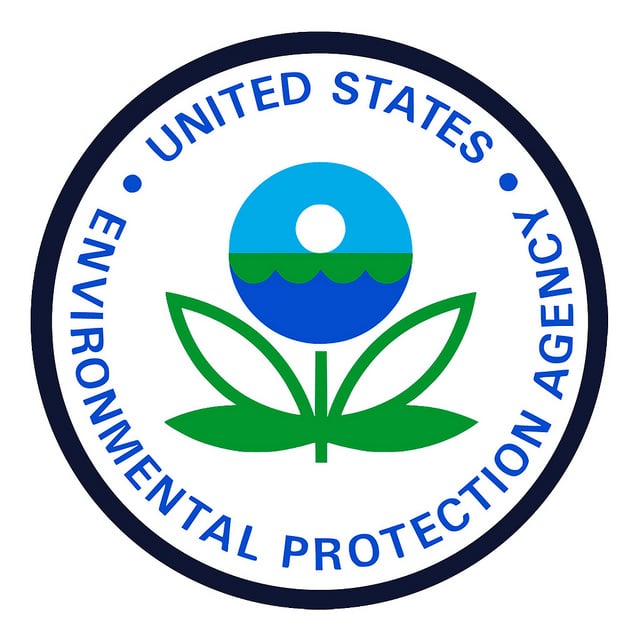On March 27, 2025 the US Securities and Exchange Commission (SEC) voted to stop defending rules adopted in 2024 (during the Biden administration) that would have required selected “public companies” (i.e, listed on national securities exchanges) to provide “climate-related disclosures for investors” in their registration statements and annual reports. SEC had stayed these rules’ effectiveness after being sued by two energy companies, which were later joined by other plaintiffs as well as state and nonprofit supporters of the rules. The latest SEC decision ends the agency’s defense in that litigation.
Read MoreAudit, Compliance and Risk Blog
SEC ends legal defense of climate-related disclosure requirements for public companies
Posted by Jon Elliott on Thu, May 15, 2025
Tags: SEC, Environmental Policy, Climate, ESG, Environmental Compliance, Risk Management, Sustainability Reporting, Climate Disclosure, Climate Risk
EPA realigns enforcement policies to match new administration
Posted by Jon Elliott on Fri, May 09, 2025
On March 12, the US Environmental Protection Agency (EPA) issued a memorandum announcing significant revisions to the agency’s enforcement policies, entitled “Implementing National Enforcement and Compliance Initiatives Consistently with Executive Orders and Agency Priorities.” The memo directs EPA’s civil and criminal enforcement staffs, revising existing Biden-era policies (which I last wrote about HERE) to conform with President Trump’s executive orders (EOs) and policy statements by new EPA administrator Zeldin. The remainder of this note summarizes this new direction.
Read MoreTags: EHS, EPA, NECI, Trump Administration, Environmental Justice rollback, Air toxics enforcement, EPA enforcement, NECI policy changes, Trump Executive Orders
EPA delays deadline to report 2024 greenhouse gas emissions
Posted by Jon Elliott on Mon, Apr 28, 2025
Since 2011, the US Environmental Protection Agency (EPA) has administered an extensive Greenhouse Gas Reporting Program (GHGRP), which requires thousands of facilities and organizations to report annual emissions of greenhouse gases (GHGs) (40 CFR part 98). Although reports are usually due by March 31 of the following year, EPA has delayed the deadline for reporting year (RY) 2024 until May 30, 2025. EPA cites delays in making the new version of its Electronic Greenhouse Gas Reporting tool (e-GGRT) available.
Read More
Tags: EPA, Greenhouse Gas, sustainability, GHGRP, Environmental Compliance, Environmental Regulations, Carbon Reporting, GHG Reporting, Climate Reporting, Compliance Update, Emission Reporting, eGGRT
California guidance for worker protection during post-wildfire cleanups
Posted by Jon Elliott on Wed, Apr 23, 2025
In the aftermath of January’s massive southern California wildfires, the California Division of Occupational Safety and Health (Cal/OSHA) has recompiled and highlighted its guidance for post-wildfire cleanup. Although this guidance is not unique (I’ve written about similar websites HERE), it provides a timely reminder to organizations in areas that may be subject to wildfires, and to other harmful incidents as well. The remainder of this note summarizes Cal/OSHA’s latest compilation.
Read MoreTags: workplace safety, Cal/OSHA, Fire Safety, Wildfire Cleanup, Occupational Health, Hazard Assessment, Environmental Health and Safety, Wildfire Preparedness, Health Hazards, Safety Regulations, Fire Risk Management, Emergency Response, Worker Safety, Post-Wildfire Recovery, Workplace Safety Guidelines
Coming to North America? EU proposes to narrow Corporate Sustainability Reporting Directive requirements
Posted by Jon Elliott on Thu, Apr 10, 2025
On February 26, the European Union’s (EU’s) European Commission issued its “Omnibus I” proposal to “recalibrate” the EU’s Corporate Sustainability Reporting Directive (CSRD), by reducing reporting requirements and excluding smaller entities. The CSRD was adopted in November 2022 and took effect in January 2023 (I wrote about it HERE), providing reporting requirements that are being phased in during 2024-2028. CSRD superseded and narrowed the EU’s previous Non-Financial Reporting Directive (NFRD; which I discussed HERE). The remainder of this note discusses the proposed changes.
Read MoreTags: CSRD, ESG, Hazardous Material, RegulatoryUpdates, Risk Management, Sustainability Reporting, EU Regulations, Sustainability Strategy, Corporate Sustainability, EU Compliance
What are Canadian agencies doing to evaluate and control the hazards of perfluoroalkyl and polyfluoroalkyl substances (PFAS) – often referred to as “forever chemicals”? The short answer is “More all the time, directed at more types of PFAS.” On March 5, Environment and Climate Change Canada (ECCC) and Health Canada issued their joint “State of Per- and Polyfluoroalkyl Substances (PFAS) Report” (Report), a 289 page status and plan report on research, information and regulatory efforts directed at PFAS hazards in Canada. The report completes a process that began in 2021, producing a draft Report In May 2023 and an updated draft in July 2024.
Read MoreTags: EHS, sustainability, PFAS, compliance, Regulatory Compliance, Environmental Regulations, Health and Safety, Forever Chemicals
Department of Labor reports fewer occupational injuries, illnesses, and deaths last year
Posted by Jon Elliott on Wed, Mar 26, 2025
The US Bureau of Labor Statistics (BLS) compiles data about occupational injuries and illnesses (I&I), and issues annual reports about occupational injuries, illnesses and fatalities. BLS cooperates with Occupational Safety and Health Administration (OSHA) requirements that employers record occupational I&I as they occur, and compile annual I&I logs to inform workers and regulators of overall rates. BLS issued its report for calendar year 2023 in December 2024, highlighting causes and distributions of workplace deaths, and noting that they were lower than in 2022. The rest of this note summarizes how these occupational incidents are reported and counted.
Read MoreTags: Health & Safety, OSHA, EHS, Safety and Health at Work, Injury, Health and Safety Compliance, Workplace Safety Guidelines, Risk Management
EPA announces 31 reconsiderations and revisions toward Trump administration priorities
Posted by Jon Elliott on Tue, Mar 18, 2025
On March 12, the US Environmental Protection Agency (EPA) announced “31 historic actions in the greatest and most consequential day of deregulation in U.S. history.” These actions move to reconsider, and likely reverse, actions from the Biden administration as well as earlier EPA actions dating back to at least 2009. These actions are summarized in a general press release, and accompanied by more than 20 additional releases announcing specific actions; most involve the Clean Air Act (CAA). EPA links these initiatives to President Trump’s latest executive orders (EOs) and policy initiatives (I wrote about the EOs HERE and HERE). In earlier notes I addressed many of the regulatory and policy actions that will now be reconsidered. )
Read MoreTags: Environmental, EPA, Clean Air Act, Clean Energy, Environmental Policy, CCA, Deregulation, Manufactoring
New Hampshire becomes latest state to require employers to allow guns at work
Posted by Jon Elliott on Fri, Mar 07, 2025
One important issue for employers to consider in their workplace safety and workplace violence prevention efforts is whether to allow employees to bring weapons to work, and if so whether to place limitations on their storage or handling – locked in an employee’s vehicle, for example. Many employers prohibit weapons on workplace premises, including the US Postal Service via its regulations (39 CFR 232.1.) In recent years, however, increasing numbers of states restrict or even prohibit employers from limiting employee weapons, at least in parked vehicles. Most recently, on January 1, 2025 New Hampshire became the latest state to block employer restrictions.
Read MoreTags: OSHA, Workplace violence, Compliance Safety, workplace safety, Gun Laws
Trump administration reworking the Environmental Protection Agency
Posted by Jon Elliott on Tue, Mar 04, 2025
Since returning to office in January, President Trump and his administration have promulgated many actions to reduce and revamp the US federal government, and additional actions focused on specific agencies. I wrote about general approaches to environmental regulation HERE. In addition, The Environmental Protection Agency (EPA) has been a target of specific directives, and new EPA administrator Lee Zeldin has already announced important policy and procedural changes at his agency. The remainder of this note summarizes EPA-specific changes ordered and/or instituted as of the end of February 2025.
Read MoreTags: EPA, tsca, clean water, Executive Order, Clean Air Act, environmental protection, Environmental Compliance, Trump, Trump Administration, Environmental Protection Agency








